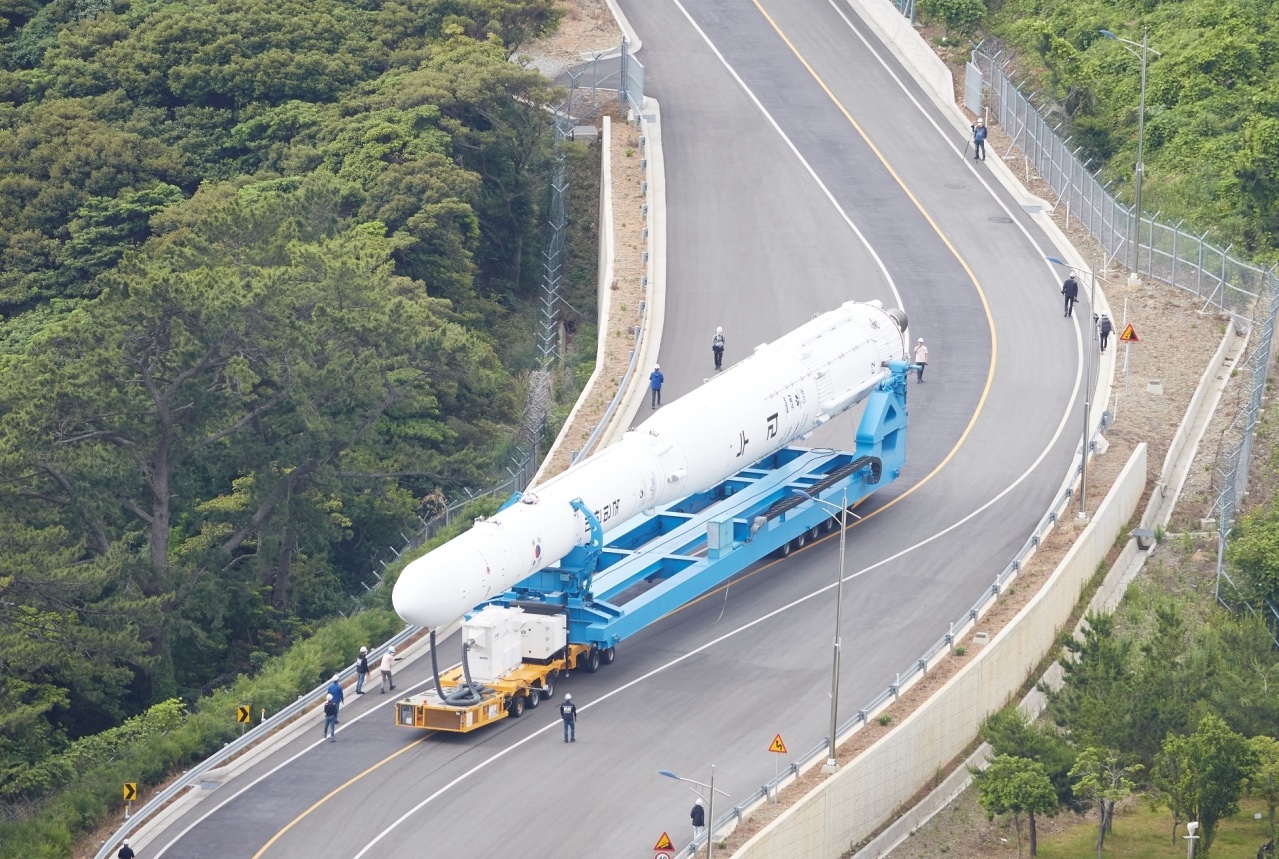SEOUL, South Korea — The second launch of South Korea’s first domestically built rocket is set for June 21, a delay of a week due to strong winds and a technical glitch.
“We convened a meeting of the launch management committee and decided to pursue the second launch on June 21,” Kwon Hyun-joon, a senior science ministry official, said June 17 in a live-streamed media briefing.
Kwon said the kerosene and liquid oxygen-fueled three-stage rocket KSLV-2 was lying horizontally in a hangar at the Naro Space Center, after a malfunctioning sensor in the first-stage booster was replaced with a new one.
The rocket will be rolled back to the launch pad June 20, he said.
KSLV-2’s second launch was initially set for June 15, with a backup launch window spanning June 16-23.
However, it was delayed to the following day due to strong winds — and delayed again after engineers found a problem with a level sensor, installed inside the oxidizer tank of the rocket’s first-stage booster, during a final pre-launch checkup at the launch pad.
According to the Korea Aerospace Research Institute (KARI), readings on the malfunctioning sensor remained static when the tank was being filled. The rocket was pulled off the launch pad and rolled back to the hangar June 15, and went through a checkup to identify the cause of the problem.
KARI said engineers identified the problematic part within the sensor and replaced it, and Kwon said they also found no other problems after inspecting the rest of the rocket.
Kwon noted that the rescheduled launch date could be subject to change depending on weather conditions.
The Naro Space Center is expecting a 60-70% chance of rain on June 21, according to the Korea Meteorological Administration.
KSLV-2 is South Korea’s first domestically developed space rocket, capable of putting up to 1,500 kilograms of payload to low Earth orbit. Its first-stage booster has a cluster of four KRE-075 engines, the second-stage has a single KRE-075 engine and the third-stage has a KRE-007 engine.
The rocket reached its intended altitude during its maiden flight Oct. 21, but its third-stage engine shut down 46 seconds early, releasing its 1,500-kilogram dummy payload at less than orbital speed.
The dummy payload fell back to Earth south of Australia, according to KARI. The premature engine shutdown was later blamed on improperly anchored helium tanks inside the upper stage.
In the upcoming launch, the rocket will carry five satellites — a 180-kilogram performance test satellite and four smaller satellites developed by domestic universities.
Besides the upcoming mission, South Korea plans to conduct four additional KSLV-2 launches by 2027 as part of efforts to further advance the country’s space rocket program.
